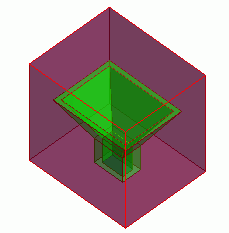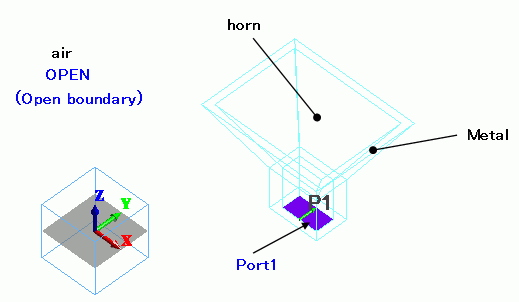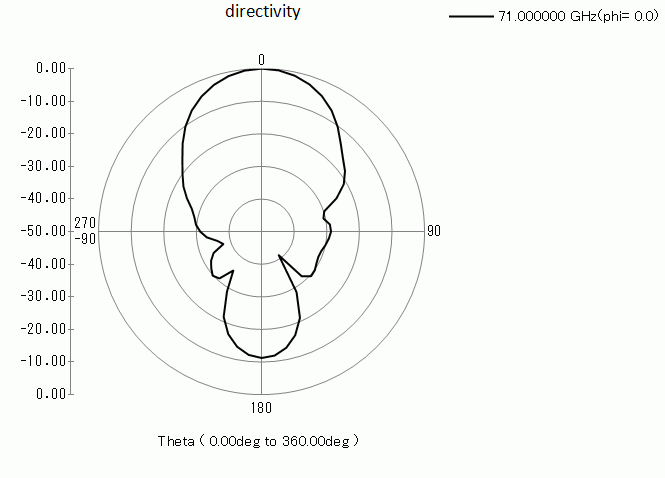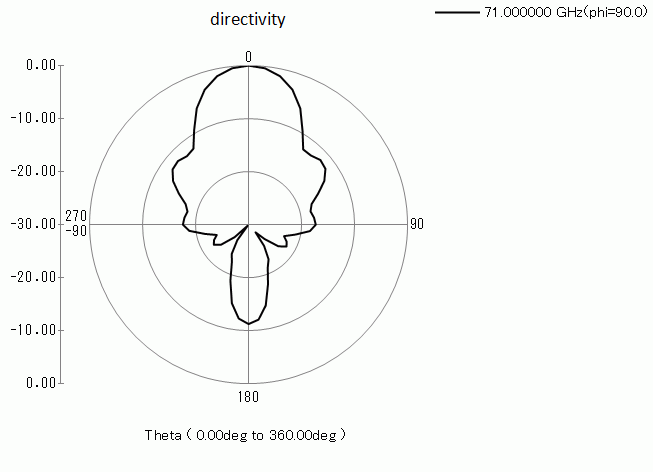
CAE Software【Femtet】Murata Software Co., Ltd.

Example4 Horn Antenna

General
-
The model is a horn antenna.
-
The S-parameters at the feeding port are solved.
-
Unless specified in the list below, the default conditions will be applied.
-
[How to Reduce the Calculation Time]
Analysis Space
|
Item |
Settings |
|
Analysis Space |
3D |
|
Model unit |
mm |
Analysis Conditions
|
Item |
Settings |
|
Solver |
Electromagnetic Analysis [Hertz] |
|
Analysis Type |
Harmonic analysis |
|
Options |
Select “Ignore the influence of face/edge electrode thickness” * |
* This is the default setting. There are no face electrodes with this model. Therefore it is irrelevant to select it or not.
Mesh tab, Harmonic analysis tab and Open boundary tab are set as follows.
|
Tabs |
Setting Item |
Settings |
|
Mesh Tab |
Element type |
2nd-order element |
|
Multigrid/Adaptive Mesh Method |
Select “Use the adaptive mesh method”. |
|
|
Frequency-Dependent Meshing |
Reference frequency: 7.1×10^10[Hz] Select “The conductor bodies thicker than the skin depth constitute the boundary condition.”
The surface of Metal is treated as the boundary condition having some loss, as Metal is thicker than the skin depth. See Effect of Mesh Size for reference. |
|
|
Harmonic analysis |
Frequency |
Minimum: 7.1×10^10[Hz] Maximum: 7.1×10^10[Hz] |
|
Sweep Type |
Select Linear step by division number. Division number: 0 |
|
|
Input |
1.0[W} |
|
|
Open boundary |
Type |
Absorbing boundary |
|
Order of Absorbing Boundary |
1st degree |
Model
An aluminum horn antenna (Metal) is placed in the cubic air (Air). The feeding point at the inside of the antenna (horn) is
set as I/O port boundary condition. The surrounding of the cubic air is the open boundary.

Body Attributes and Materials
|
Body Number/Type |
Body Attribute Name |
Material Name |
Mesh Size |
|
50/Solid |
Metal |
001_Al * |
0.3 |
|
51/Solid |
horn |
000_Air(*) |
0.3 |
|
55/Solid |
air |
000_Air(*) |
|
* Available from the Material DB
Boundary Conditions
|
Boundary Condition Name/Topology |
Tab |
Boundary Condition Type |
Settings |
|
port1/Face |
Electric |
I/O Port |
Reference Impedance: Select Number of Modes Number of precalculated modes: 5 Number of modes used in the actual analysis: 1 Select modes: none |
|
Outer Boundary Condition |
Electric |
Open boundary |
|
Results
The radiation pattern of the horn antenna is plotted with polar graph.
The unit is [dB].
-
See [Exercise 7: Dipole Antenna].
-
See also [Electromagnetic Waves Directivity].
φ=0[deg], θ=0-360[deg], 60 steps

φ=90[deg], θ=0-360[deg], 60 steps


